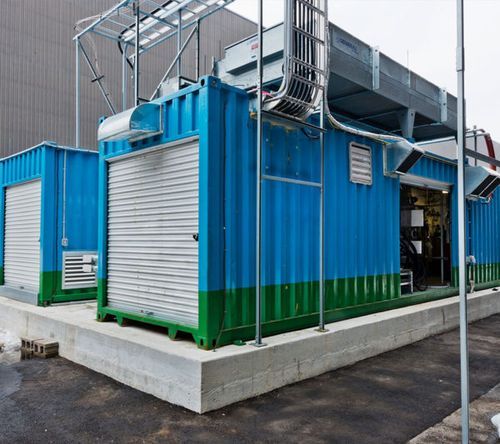Pattern Energy has filed an environmental assessment registration detailing its plans for a CAD 1.5bn wind-to-green ammonia project in Newfoundland and Labrador.
The deadline for public comments on the proposal is September 5, while a decision from the province’s Minister of Environment and Climate Change is due by September 15.
The project, known as the Argentia Renewables Project, aims to produce green hydrogen using wind-generated electricity and convert it into ammonia for efficient storage and transportation. This will be accomplished at the Argentia Green Fuels Facility, powered by approximately 300 MW of wind-generated electricity from up to 46 wind turbines located throughout the Port of Argentia property. The wind turbines will have a nominal power of 6.8 MW each, with a hub height of approximately 100-119 meters and a rotor diameter of 162 meters.
The hydrogen will be produced via electrolysis and then combined with nitrogen to synthesize ammonia through the Haber-Bosch process. The facility is expected to produce up to 400 metric tonnes per day of green ammonia, translating to about 146,000 metric tonnes annually. The ammonia will be exported by third-party marine vessels to international markets.
The Port of Argentia and Germany’s Hamburg Port Authority signed a Letter of Intent to collaborate on the export and import of green hydrogen from Canada to Germany.
Pattern and Mabanaft GmbH & Co. KG (Mabanaft) also signed a Letter of Intent for offtake.
The project includes the following key components:
- Wind Turbines: Approximately 300 MW of installed capacity.
- Electrical Transmission Systems: Includes substation(s), water collection and treatment systems, access roads, hydrogen electrolyzers and storage, ammonia synthesizers and storage, ammonia vessel loading, and maintenance buildings.
- Hydrogen Production and Storage: The electrolyzer capacity will be around 160 MW, with hydrogen storage capacity of 15 tonnes.
- Ammonia Plant: Designed to produce up to 400 MTPD (metric tonnes per day).
The project’s financial strategy involves project financing, with debt sourced from commercial banks and/or institutional lenders to cover a significant portion of the capital costs. The development costs and remaining construction phase costs will be covered through project sponsor equity.
The optimal plant size, according to a first-order optimization study conducted by AtkinsRéalis, was determined to include:
- Electrolyzer installed capacity: 160 MW
- Ammonia installed capacity: 400 MTPD
- Water consumption: 1,185 m³/day
- Electrolyzer load factor: 95%
- Ammonia plant load factor: 93%
- Firm grid power import assumed: 10 MW.
The project’s timeline is divided into several phases:
- Construction Phase: Estimated to take 29 months.
- Operation Phase: Expected to last nominally 30 years.
- Decommissioning Phase: Planned for one year.
These phases are expected to span from 2025 to 2058, with the construction phase likely beginning in 2025. The timeline incorporates all necessary regulatory approvals, stakeholder consultations, and environmental assessments.




